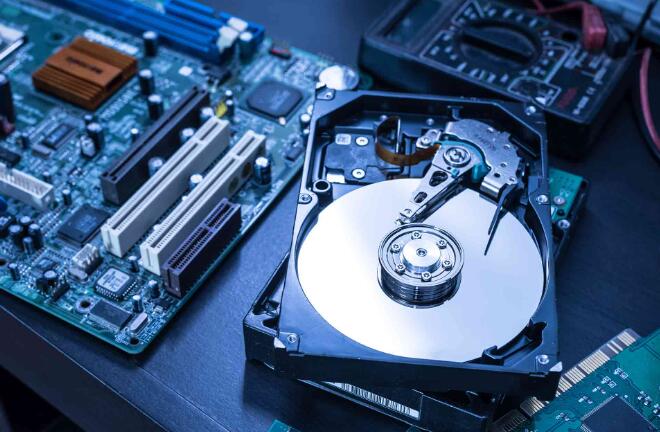1. Data Recovery Services
Data loss can be a devastating experience for individuals and businesses alike. Whether it’s due to hardware failure, accidental deletion, or malicious attacks, the loss of important files can cause significant disruption. Data recovery services play a crucial role in retrieving lost data from various storage devices such as hard drives, SSDs, USB drives, and more.
2. Types of Data Recovery Services
Physical Data Recovery:
Involves retrieving data from physically damaged storage devices.
Common issues include head crashes, platter damage, and motor failure.
Often requires specialized cleanroom facilities to repair and recover data from the damaged hardware.
Logical Data Recovery:
Deals with data loss due to software-related issues such as file system corruption, accidental deletion, or malware attacks.
Involves using specialized software tools to recover lost data without any physical repair.
RAID Data Recovery:
Focuses on recovering data from RAID (Redundant Array of Independent Disks) configurations, which are commonly used in enterprise environments.
RAID recovery can be complex, involving the reconstruction of the RAID array to retrieve data.
Mobile Data Recovery:
Targets data recovery from smartphones and tablets.
Includes retrieval of contacts, messages, photos, and other personal data.
Cloud Data Recovery:
Involves recovering data stored in cloud services, such as Google Drive or Dropbox, which may have been accidentally deleted or corrupted.

3. Factors Affecting Data Recovery Costs
Several factors influence the cost of data recovery services:
Type of Failure:
Physical damage typically costs more to repair and recover data from than logical issues due to the need for specialized equipment and cleanroom facilities.
Storage Device Type:
Hard drives, SSDs, USB drives, and other storage devices vary in complexity, which can affect the cost. For example, SSD recovery can be more expensive due to the advanced technology used in these devices.
Data Volume:
The amount of data to be recovered can impact the cost. Larger volumes of data may require more time and resources, increasing the overall price.
Recovery Time:
Some services offer expedited recovery for urgent needs, which can significantly increase the cost.
Service Provider Expertise:
Reputable and experienced data recovery companies may charge more, but they often provide higher success rates and better service quality.
Location:
Geographic location can also play a role in pricing, with services in major cities potentially costing more than those in smaller towns or remote areas.
4. Typical Cost Range for Data Recovery Services
The cost of data recovery services can vary widely depending on the factors mentioned above:
Logical Data Recovery:
Typically ranges from $100 to $1.000.
Simple recoveries, such as retrieving accidentally deleted files, are on the lower end, while more complex cases, like recovering data from corrupted file systems, can be more expensive.
Physical Data Recovery:
Costs can range from $500 to $2.500 or more.
The price depends on the extent of the physical damage and the type of device. For example, recovering data from a physically damaged SSD might be more costly than from a traditional hard drive.
RAID Recovery:
RAID recovery is usually more expensive, ranging from $1.000 to $5.000 or more.
The complexity of rebuilding RAID arrays and the potential for multiple drive failures contribute to the higher cost.
Mobile Data Recovery:
Costs can range from $200 to $1.500.
The price depends on the device and the type of data being recovered.
5. Tips for Selecting a Data Recovery Service
Choosing the right data recovery service is crucial to ensuring a successful recovery:
Research and Reviews:
Look for reviews and testimonials from previous customers to gauge the service provider’s reputation and success rate.
Certifications and Cleanroom Facilities:
Ensure the provider has the necessary certifications and cleanroom facilities, especially for physical data recovery.
Clear Pricing Structure:
Avoid companies with ambiguous pricing. A transparent pricing structure will help you understand the potential costs upfront.
No Data, No Charge Policy:
Many reputable companies offer a “no data, no charge” policy, meaning you only pay if the recovery is successful.
Free Evaluation:
Opt for providers that offer a free evaluation and diagnostic service before committing to the recovery process.
6. Conclusion
Data recovery services are a valuable resource for retrieving lost or inaccessible data from various storage devices. While the cost can vary significantly depending on the type of service and complexity of the recovery, it’s important to select a reliable provider to ensure the best chance of success. By understanding the factors that influence pricing and carefully choosing a service provider, you can mitigate the risks and recover your valuable data efficiently.
About us and this blog
Panda Assistant is built on the latest data recovery algorithms, ensuring that no file is too damaged, too lost, or too corrupted to be recovered.
Request a free quote
We believe that data recovery shouldn’t be a daunting task. That’s why we’ve designed Panda Assistant to be as easy to use as it is powerful. With a few clicks, you can initiate a scan, preview recoverable files, and restore your data all within a matter of minutes.
Subscribe to our newsletter!
More from our blog
See all postsRecent Posts
- How to recover sd card data after format? 2025-01-17
- How to format an sd card for gopro? 2025-01-17
- How to format an sd card for raspberry pi? 2025-01-17










